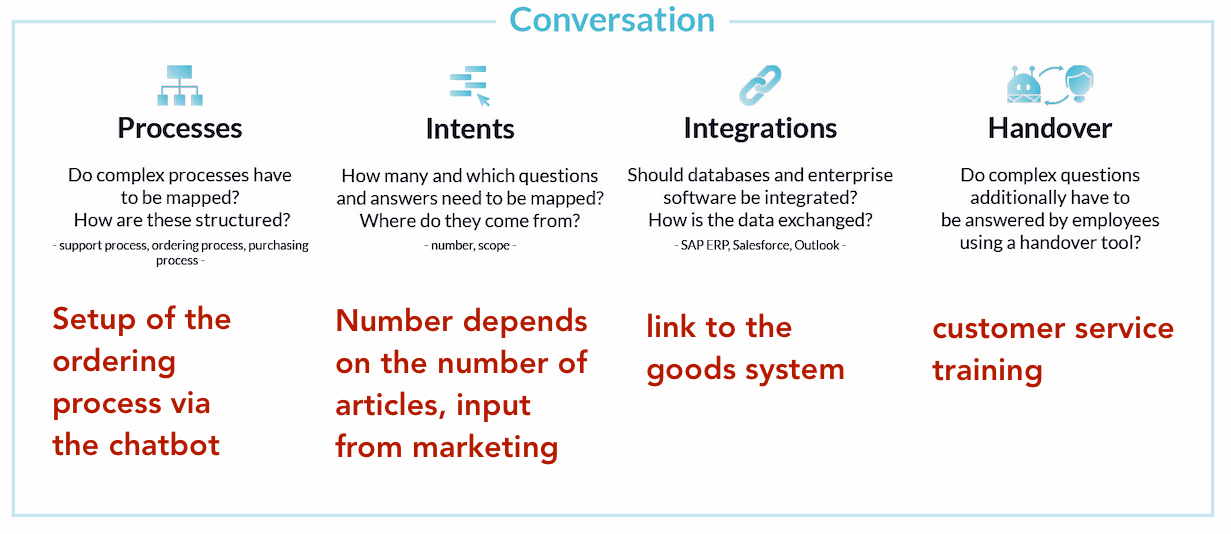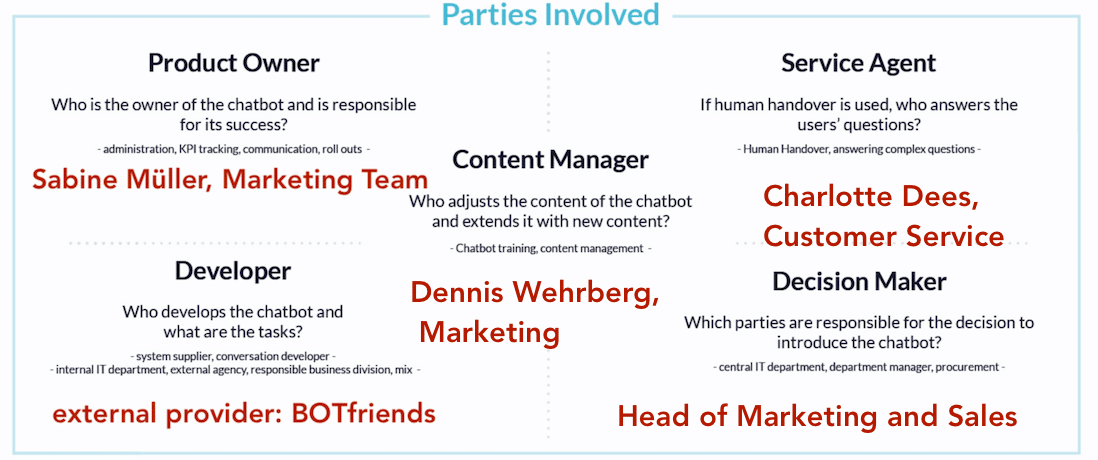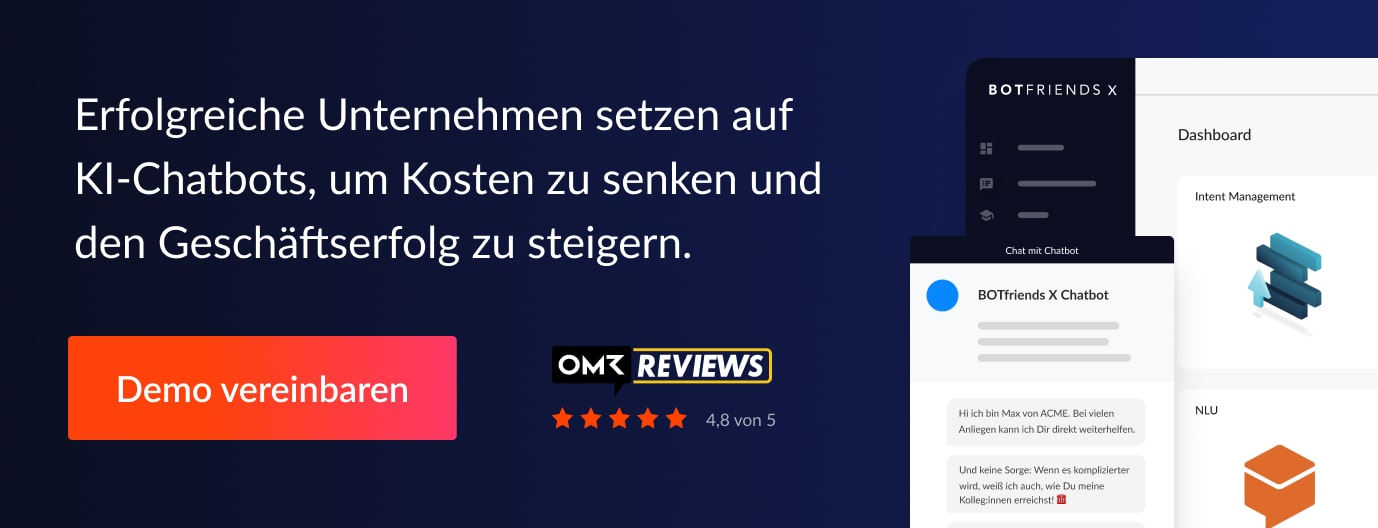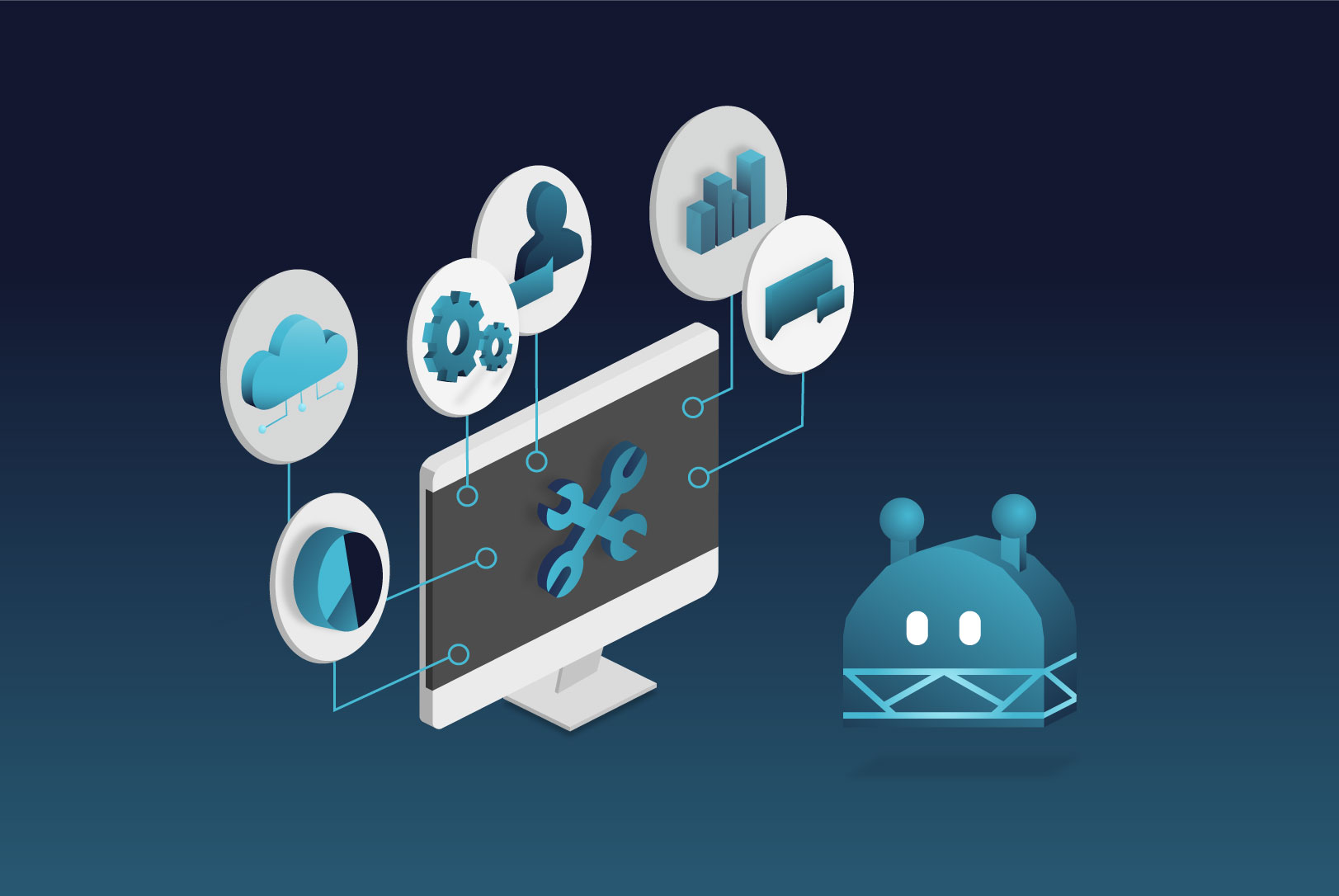Develop your chatbot concept - part 2
In the second part, we will go into the technical aspects and the members of your Conversational AI team.
- Part: Definition of the problem and the use case
- Part: Communication and marketing of the chatbot
- Part: The technical requirements of the chatbot project
- Part: Stakeholders and costs in the chatbot project
Part 3: The technical requirements of a chatbot project
The selection of channels
Different channels can be choosen to use a chatbot. For example, the company website, messenger channels, applications such as Microsoft Teams or social media apps are available. The following questions can help you choose the communication channel:
- Where do my customers move?
- Which channels are already used for internal communication?
- Where is a target group that I would like to open up?
Example:

What processes need to be considered in the development of the dialogues?
Dialogs must be developed for each chatbot. How these look like depends on the following factors:
- To which business processes does the chatbot link?
- Which answers should the chatbot be able to give? How many answers and question options must be entered into the chatbot?
- Which databases or company software must be integrated?
- What happens if the chatbot does not know what to do?
Example:

It is also advisable to set up a human handover. In this case, the user is forwarded to a real service employee if the chatbot cannot process a request. Such an integration is integrated by default on the Conversational Middleware Platform BOTfriends X.
Part 4: Stakeholders and costs in a chatbot project
A chatbot is only as good as the team that builds, maintains and trains it.
Who is on my chatbot team?
A Conversational AI team includes a product owner, developers, content managers, service agents and a decision maker.
Product Owner:in
He or she is responsible for the chatbot and its success. This team member takes over the administration, monitors the KPI's and is responsible for communication and rollout.
Service Agent:in
If the chatbot is unable to answer an inquiry, it is forwarded to a real employee via human handover. This person belongs to the customer service department, for example, and is trained to advise customers.
However, it can also be an employee from the HR department if, for example, a chatbot is used to answer employees' questions about working hours and the like.
Developer:inside
Companies can choose to have the chatbot developed in-house or outsource the development to external providers. These are especially important when enterprise systems need to be connected.
If external providers are chosen, they should ideally also offer a conversational middleware platform in addition to the development of the chatbot. With such a platform, for example BOTfriends X, it is possible to scale chatbot projects and adapt the selected technologies to changes on the market without great effort.
Content Manager:in
This team member plays a central role in the success of the chatbot. It is the Content Manager, also called Intent Manager, who maintains and trains the contents of the chatbot. Therefore he or she must have the necessary expertise and know how to use the technology.
The latter requires thorough instruction and training. An employee who, for example, has expert knowledge of the products does not necessarily know how to create intents and utterances.
Decision maker:in
Whether, how, and when a chatbot is introduced into a company must be decided by the responsible parties. This can be the IT department or the customer service management.
It is important that the responsibilities and tasks within the team are clearly defined and assigned.

How much will my chatbot cost me?
The amount of the costs varies from case to case, so it is not possible to give general information here. Cost items, which however should be considered in any case are
- Development costs or the set-up costs with a service provider
- the cost of integration into different systems
- the license costs for the use of software such as a Conversational Middleware Platform
If you want to know more about implementing voice and chatbot projects, we can recommend the white paper "No more POC Chatbots". In it, we go into the most common mistakes when planning and implementing conversational AI projects and explain how you can avoid them.



